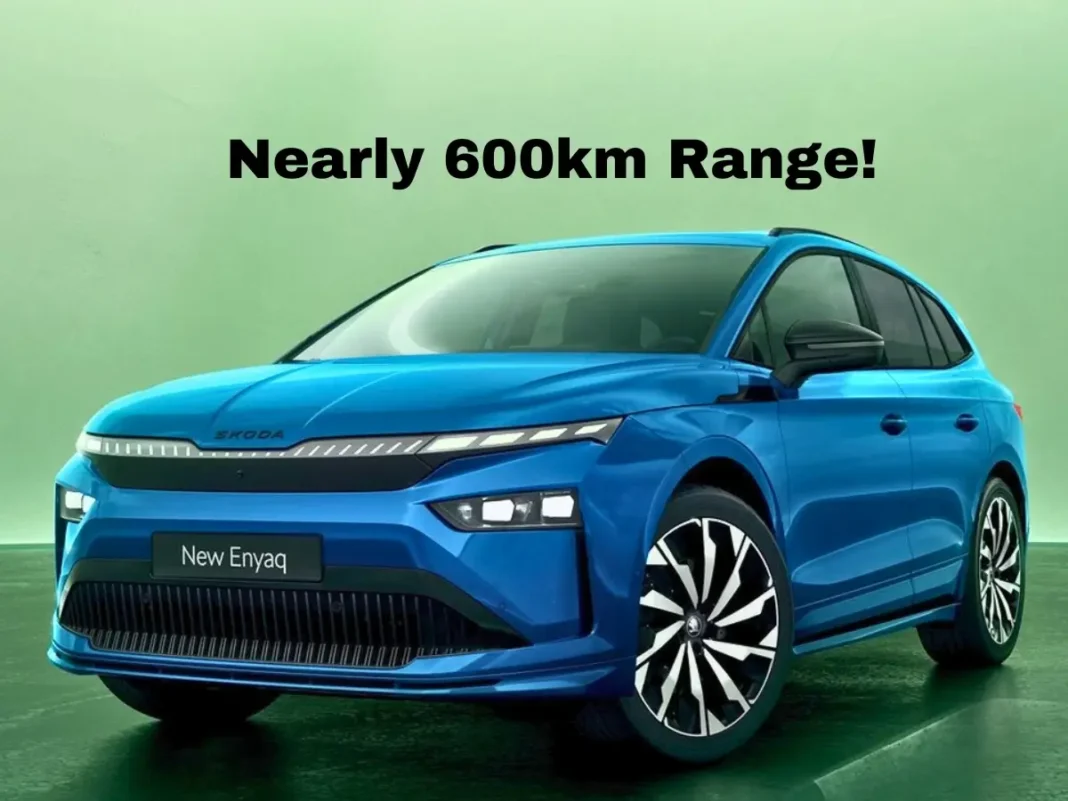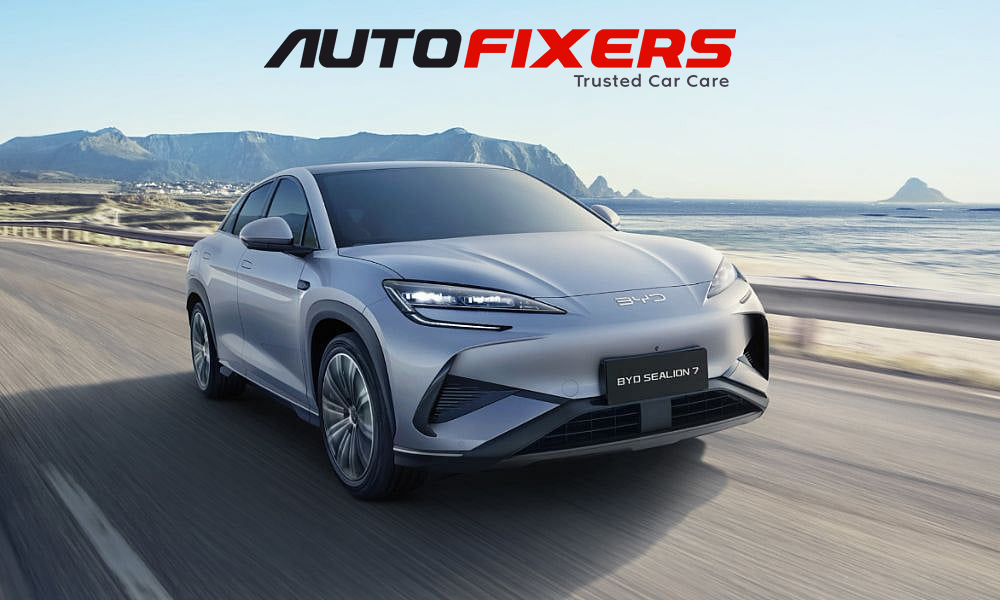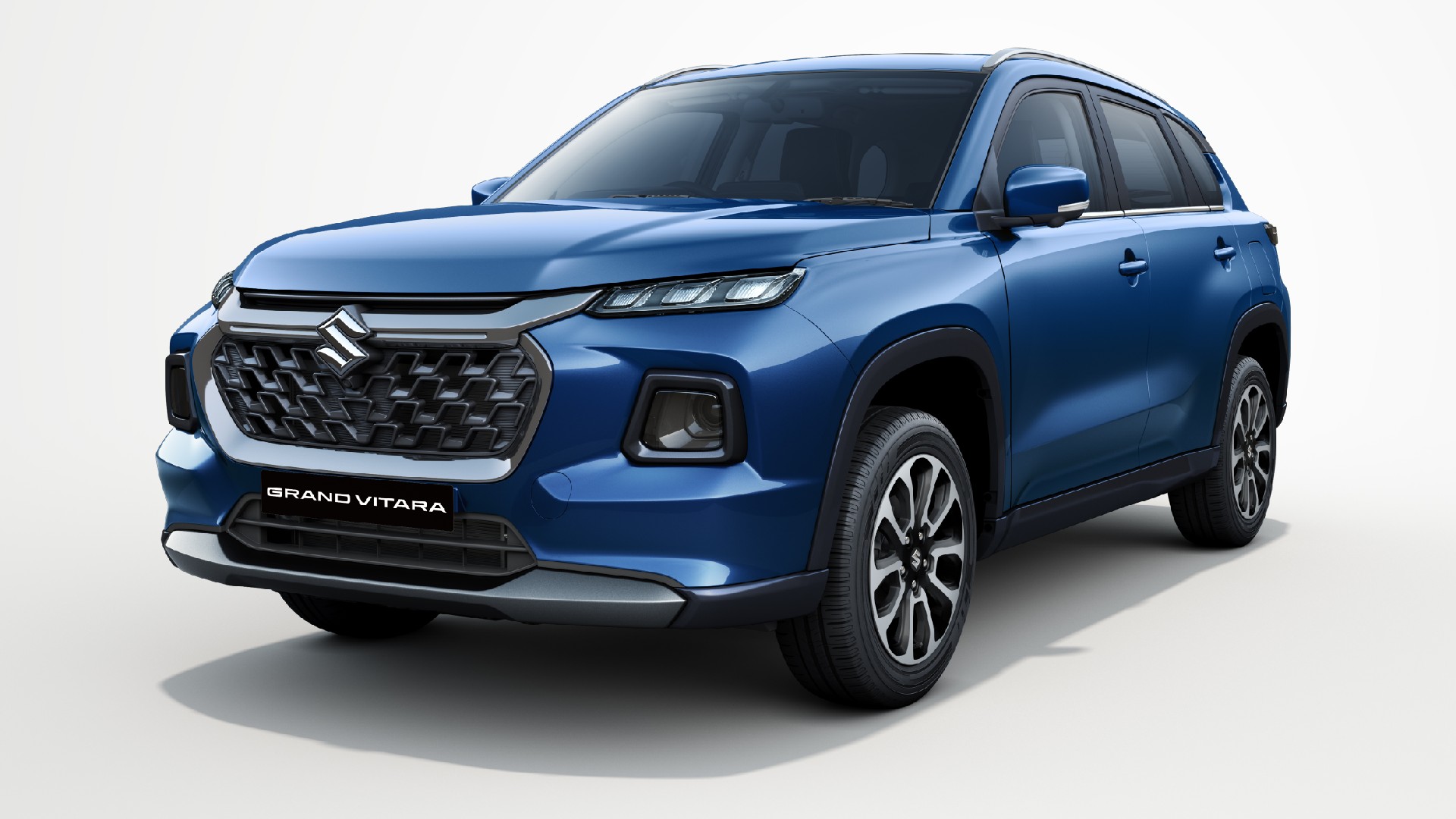The premium electric vehicle (EV) market has become increasingly competitive. In the past, there were only two options in the price range between Rs 25 lakh to Rs 1 crore: the MG ZS EV and the Mercedes EQC. However, the landscape has changed with the introduction of six EVs around the Rs 50 lakh mark. Among these, the Hyundai Ioniq 5, the newly launched BYD Sealion 7, and the locally manufactured BMW iX1 LWB stand out as top contenders. We evaluated these three models through real-world tests to determine which one truly deserves a place in your garage.
All three EVs span lengths exceeding 4.6 meters, widths over 1.8 meters, and boast a wheelbase of at least 2.8 meters. The BYD is the longest and widest, the BMW takes the height title, while the Hyundai offers the most extensive wheelbase. The BYD and Hyundai utilize dedicated electric platforms that optimize interior space, allowing both models to include a functional front trunk (frunk), a feature absent in the BMW, which has been converted from an ICE model.
Exterior Design and Engineering
| Specifications Comparison | |||
|---|---|---|---|
| Sealion 7 Performance | iX1 eDrive 20L | Ioniq 5 | |
| Length | 4830mm | 4616mm | 4635mm |
| Width | 1985mm | 1845mm | 1890mm |
| Height | 1620mm | 1627mm | 1625mm |
| Wheelbase | 2930mm | 2800mm | 3000mm |
| Boot capacity (F/R) | 58/500 litres | NA/490 litres | 57/527 litres |
| Kerb weight | 2340kg | 1948kg | 2015kg |
| Tyre size | 245/45 R20 | 225/55 R18 | 255/45 R20 |
| Battery capacity | 82.56kWh | 66.4kWh | 72.6kWh |
| Power | 530hp | 204hp | 217hp |
| Torque | 690Nm | 250Nm | 350Nm |
| Drive layout | AWD | FWD | RWD |
Each of these three electric vehicles presents a different aesthetic. The Ioniq 5 resembles a large hatchback, the BMW iX1 embodies a traditional SUV form, while the Sealion 7 takes on a coupé-SUV look. Your choice will depend on your style preference, as each vehicle showcases unique design traits.
The Ioniq 5 features a neo-retro design with sharp edges and distinct multi-spoke, dual-tone alloy wheels, highlighted by its rectangular lighting arrangements. In contrast, the Sealion 7 exhibits a more rounded design that aligns with BYD’s signature look, giving it a larger presence from the front, while the tapering roofline adds elegance. The rear benefits from a connected lighting element with intricate details. The BMW, being the most traditional, has a more upright SUV appearance, featuring the recognizable kidney grille, albeit slightly oversized, alongside significant LED headlights. Its side profile appears a bit disproportionate due to the elongated wheelbase contrasting with its smaller 18-inch wheels, while the rear mirrors the standard X1’s style with prominent L-shaped LED tail-lights.
Interior Space and Comfort
Inside the cabins, all three EVs exhibit distinct characteristics. The Sealion 7 introduces a relatively conventional dashboard housing the infotainment touchscreen and driver display. The 15.6-inch touchscreen, typical of BYD, can be rotated from landscape to portrait mode, offers an intuitive user interface with high-quality graphics, and enables seamless control over many vehicle functions. Physical controls are present in the center console, enabling easy adjustments for the AC settings without diving into sub-menus.
The driver’s display is also high-resolution, though some may find it cluttered, with vital information appearing quite small. Nonetheless, BYD excels in material quality and fit-and-finish, which rival those of European luxury brands. Inside the console, there are wireless charging pads and cup holders, along with ample storage beneath the console. The front seats, equipped with ventilation, offer great comfort for occupants. The rear seating is equally plush with abundant space, especially for legroom, complemented by large windows and a glass roof that enhances the open feel.
BYD has outfitted the Sealion 7 with numerous features, including wireless smartphone integration, a robust 12-speaker Dynaudio sound system, power-adjustable front seats, automatic headlamps and windshield wipers, a gesture-controlled powered tailgate, dynamic ambient lighting, and more. Safety is prioritized with 11 airbags, including side airbags for added protection, along with Level 2 ADAS, a user-friendly 360-degree camera, and a driver-attention monitor, which can be overly sensitive, even triggering warnings for brief glances at the touchscreen.
For the BMW iX1 LWB, it features a similar dashboard design as its ICE counterparts, with a large, curved display that integrates the infotainment touchscreen with the instrument panel. The cabin includes wide AC vents and a wireless charging pad, with controls for various functions seamlessly integrated into the centre console. Although high-resolution, the screens can initially pose a challenge to navigate.
Front seats in the BMW provide good support, although larger passengers might find them narrow, and they lack ventilation, a feature present in the other two EVs. The rear seating offers ample legroom, benefiting from the long wheelbase, though the seating position is somewhat low due to the underfloor battery. Despite this, the backrest can recline to enhance comfort, although it feels narrower compared to the BYD’s plushness. BMW’s features include a panoramic glass roof, ambient lighting, auto LED headlamps, connected technology, a smartphone-enabled key, high-quality upholstery, eight airbags, and Level 2 ADAS technology.
Moving to the Hyundai Ioniq 5, the cabin radiates spaciousness, attributed to its vast glass area, light colors, flat floor, and innovative absence of a conventional centre console. The interior uses recycled, sustainable materials without compromising on fit-and-finish. However, the white upholstery is prone to staining. The dashboard features two 12.3-inch screens serving as the instrument cluster and infotainment display, with crisp graphics and user-friendly navigation.
The seats in the Ioniq 5 are generously cushioned and highly adjustable, providing both ventilation and heating. The rear seats accommodate three adults comfortably, though they may also require an adjustment due to the under-floor battery position. Additionally, the Ioniq 5 boasts a panoramic glass roof, an 8-speaker Bose audio system, a 360-degree parking camera, dual-zone climate control, an electric boot, ESP, six airbags, and ADAS.
Features and Safety
| Features and Safety Equipment Comparison | |||
|---|---|---|---|
| Equipment | Sealion 7 Performance | iX1 eDrive 20L | Ioniq 5 |
| Auto LED headlamps | Yes | Yes | Yes |
| Alloy wheels | 20-inch | 18-inch | 20-inch |
| Glass roof | Panoramic | Panoramic | Panoramic |
| Touchscreen | 15.6-inch | 12.3-inch | 12.3-inch |
| Apple CarPlay/Android Auto | Wireless | Wireless | Wired |
| Branded audio system | Dynaudio | Harman Kardon | Bose |
| Ventilated/heated front seats | Yes/No | No/No | Yes/Yes |
| Wireless charging | Yes | Yes | Yes |
| Ambient lighting | Yes | Yes | Yes |
| Paddle shifters | No | No | Yes |
| Drive/regen modes | Yes/Yes | Yes/Yes | Yes/Yes |
| 360-degree camera | Yes | Yes | Yes |
| Tinted rear glass | Yes | No | No |
| Rear sunshades | No | No | Yes |
| ADAS | Yes | Yes | Yes |
| Airbags | 11 | 8 | 6 |
| Price (ex-showroom) | Rs 54.90 lakh | Rs 49 lakh | Rs 46.05 lakh |
Performance and Refinement
| Performance Comparison | |||
|---|---|---|---|
| Sealion 7 Performance | iX1 eDrive 20L | Ioniq 5 | |
| 0-20kph | 0.84s | 1.73s | 1.23s |
| 0-40kph | 1.58s | 3.12s | 2.52s |
| 0-60kph | 2.35s | 4.53s | 3.82s |
| 0-80kph | 3.19s | 6.22s | 5.41s |
| 0-100kph | 4.43s | 8.34s | 7.48s |
| 0-120kph | 6.18s | 11.30s | 10.09s |
| 20-80kph | 2.48s | 4.83s | 4.12s |
| 40-100kph | 2.91s | 5.72s | 4.82s |
| 80-0kph (braking) | 26.22m/2.32s | 26.48m/2.37s | 24.43m/2.14s |
These three EVs differ in their drive configurations. The Sealion 7 operates on an all-wheel drive basis (there’s even a rear-wheel drive option), while the Ioniq 5 is rear-wheel drive, and the BMW features a front-wheel drive layout. In terms of output, the BYD stands at 530hp with 690Nm torque, followed by Hyundai at 217hp with 350Nm and the BMW at 204hp with 250Nm. This performance hierarchy is echoed in their acceleration figures, with the Sealion 7 completing 0-100kph in a brisk 4.43 seconds, while the Ioniq 5 and the iX1 take 7.48 seconds and 11.30 seconds, respectively. The BYD also excels in rolling acceleration.
All three vehicles deliver power in a smooth, linear fashion, contrasting the abrupt deliveries of earlier electric models. Each model is equipped with multiple drive modes that influence throttle sensitivity and power distribution.
The BYD Sealion 7 undeniably feels the quickest, with its AWD system aiding in smooth power distribution during acceleration. Its silent powertrain allows for a serene ride, but as speeds elevate, some outside noise becomes noticeable.
The Hyundai Ioniq 5, while not offering neck-snapping acceleration, provides a sleek delivery of power. In Sport mode, it feels engaging and responsive, reminiscent of traditional internal combustion engine (ICE) vehicles in terms of throttle response. Cabin noise from the road and tires is minimal, maintaining a tranquil driving experience.
On the other hand, the BMW, despite being the heaviest, delivers a more laid-back driving feel. With over 200hp, overtaking can feel less instantaneous, leading to some torque steer due to its front-wheel drive configuration. In terms of sound insulation, it remains quieter than the BYD but does not quite match the Hyundai’s serenity.
Range and Efficiency
| Range and Efficiency Comparison | |||
|---|---|---|---|
| Sealion 7 Performance | iX1 eDrive 20L | Ioniq 5 | |
| City efficiency | 4.90km/kWh | 6.48km/kWh | 7.07km/kWh |
| Highway efficiency | 4.17km/kWh | 5.60km/kWh | 5.67km/kWh |
| Range | 371km | 398km | 457km |
| Regen braking on high (80-20kph) | 236.44m/18.13s | 131.67m/9.17s | 164.67m/12.16s |
| Regen braking on medium (80-20kph) | NA | 183.88m/12.82s | 213.11m/15.74s |
| Regen braking on low (80-20kph) | 421.22m/32.16s | 373.8m/26.14s | 367.65m/27.55s |
Similar to power outputs and performance, the battery sizes follow the same ranking. The Sealion 7 is powered by an 82.56kWh unit with BYD’s innovative blade cell LFP battery technology. The Ioniq 5 hosts a 72.6kWh pack as the second largest, while the BMW holds the smallest with a 66.4kWh capacity, both utilizing NMC battery chemistry. Nevertheless, the Ioniq 5 boasts the highest claimed range of 631km, with the Sealion 7 at 542km, closely followed by the iX1 at 531km.
In real-world testing, the Ioniq 5 achieved the longest range at 457km, significantly surpassing its counterparts. The iX1 delivered a range of 398km, while the BYD yielded the least at 371km. Typically, all three models demonstrated improved efficiency in urban driving scenarios, where energy recuperation is more effective.
Among the three, the BMW provides varied regen braking modes but does so with four levels of adjustment. The Hyundai offers three levels, while the BYD opts for only two modes. A notable aspect of BMW is its adaptive regen, though its interface isn’t intuitive. The Hyundai further stands out as it allows the driver to disable regen for smoother coasting, with both the iX1 and Ioniq 5 successfully employing one-pedal driving.
The Ioniq 5 excels at charging capabilities, supporting DC fast charging up to 350kW, allowing for a charge from 10% to 80% in a mere 18 minutes. The BYD accommodates charging up to 150kW, while also featuring vehicle-to-vehicle (V2V) and vehicle-to-load (V2L) functionalities, enabling it to charge other electric vehicles and support external devices. The BMW supports fast charging at up to 130kW.
Ride Comfort and Handling
The ride quality of the Sealion 7 presents a hint of firmness yet manages to handle road imperfections quite effectively. Its 20-inch wheels may contribute to a slightly harsh experience over bumpy surfaces. Due to its weight and elevated center of gravity, body roll is evident during turns, and the steering response feels a bit over-sensitive.
The Ioniq 5 provides a planted driving feel across various speeds and reveals a sophisticated handling character. Direct steering aids in a better driving experience, although it isn’t the sportiest choice, which aligns with its comfort-oriented design. Despite the sizable 20-inch wheels, ride quality remains comfortable, and it adeptly manages rough terrains with minor vertical movements over undulations.
The BMW iX1 gravely suffers in agility due to its long wheelbase compared to its standard counterpart; however, it still provides commendable grip during cornering with minimal body roll. The overall ride quality is consistent with what is expected from BMW, delivering outstanding absorption capabilities that maintain composure over diverse surfaces.
Price and Verdict
The iX1, with the strength of the BMW brand behind it, is spacious and priced attractively at Rs 49 lakh. Additionally, it leads the pack in driving dynamics. Yet, it suffers from some drawbacks, including lesser equipment compared to the other two, a complicated infotainment system with excessive control demands, a firm rear seat cushion, and lower-quality plastics in specific areas.
The BYD Sealion 7 sets a new benchmark for the brand in India, presenting a well-rounded package that incorporates the best of its sedan counterpart into a more practical frame. Premium interior craftsmanship and modern technology enhance its appeal, along with a powerful drivetrain. Its all-wheel drive capability (priced at Rs 54.90 lakh) offers an appealing driving experience, having a utility with a claimed range of 567km, but it compromises with the lowest real-world range performance at 371km.
Finally, the Hyundai Ioniq 5 emerges as the top contender, standing out as the most comprehensive and accessible offering among the three. Its interior is spacious, uniquely styled, and the infotainment system is user-friendly. The Ioniq 5 is the most enjoyable to drive, provides the best real-world range, and supports the fastest charging speeds at an appealing price of Rs 46 lakh. Thus, it is no surprise that the Ioniq 5 has won accolades and recognition for its excellence compared to its competitors.





